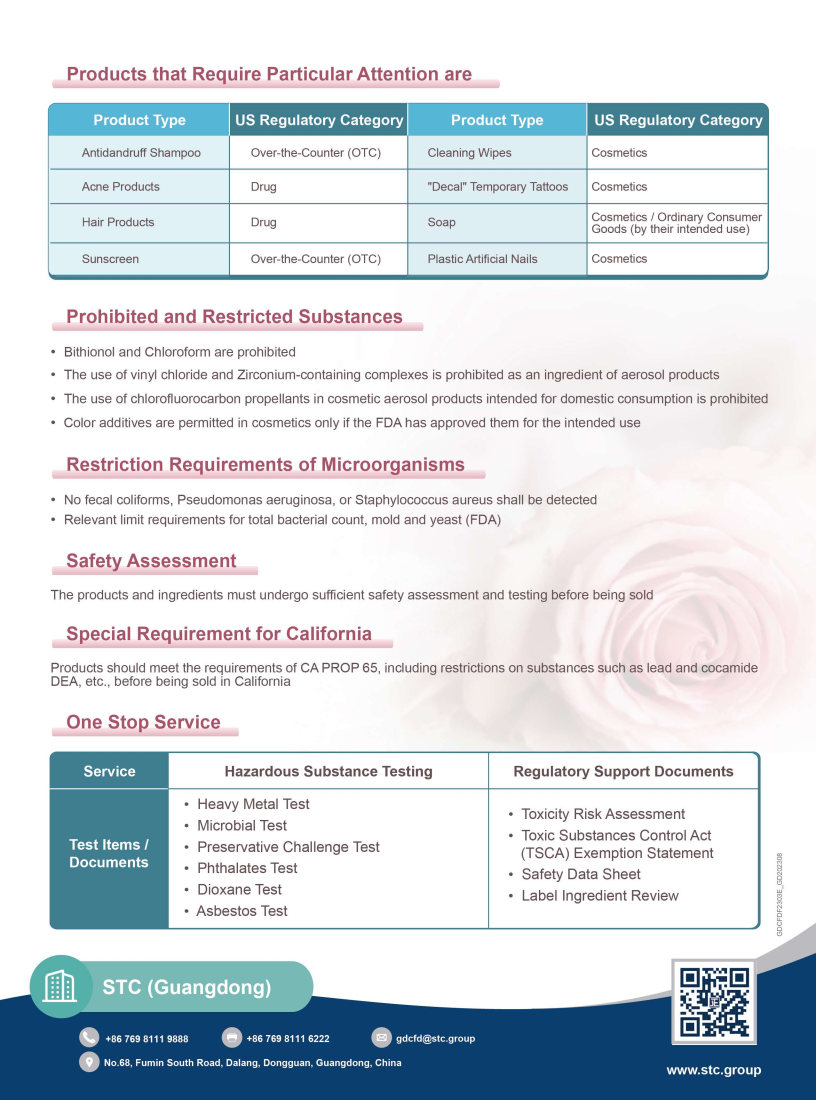The US Food and Drug Administration (FDA) definition of cosmetics
The Federal Food, Drug & Cosmetic Act (FD&C Act) defines cosmetics as "articles intended to be rubbed, poured, sprinkled, or sprayed on, introduced into, or otherwise applied to the human body, etc., for cleansing, beautifying, promoting attractiveness, or altering the appearance" (Section 201(i) of the FD&C Act). Included in this definition are products such as skin moisturizers, perfumes, lipsticks, fingernail polishes, eye and facial makeup preparations, shampoos, hair perms, hair dyes, and deodorants, as well as any material intended for use as a component of a cosmetic product.
FDA Responsibilities
- Can pursue enforcement action against cosmetic products on the market that are not in compliance with the law, or against firms or individuals who violate the law.
- Collaborate with US Customs to monitor imports: products that do not comply with FDA regulations will be refused entry into the United States.
- Regularly inspect cosmetic companies to ensure that they comply with relative regulations and standards.
Prohibited and Restricted Substances
- Bithionol and Chloroform are prohibited
- The use of vinyl chloride and Zirconium-containing complexes is prohibited as an ingredient of aerosol products
- The use of chlorofluorocarbon propellants in cosmetic aerosol products intended for domestic consumption is prohibited
- Color additives are permitted in cosmetics only if the FDA has approved them for the intended use
Restriction Requirements of Microorganisms
- No fecal coliforms, Pseudomonas aeruginosa, or Staphylococcus aureus shall be detected
- Relevant limit requirements for total bacterial count, mold and yeast (FDA)
Safety Assessment
- The products and ingredients must undergo sufficient safety assessment and testing before being sold
Special Requirement for California
- Products should meet the requirements of CA PROP 65, including restrictions on substances such as lead and cocamide DEA, etc., before being sold in California









